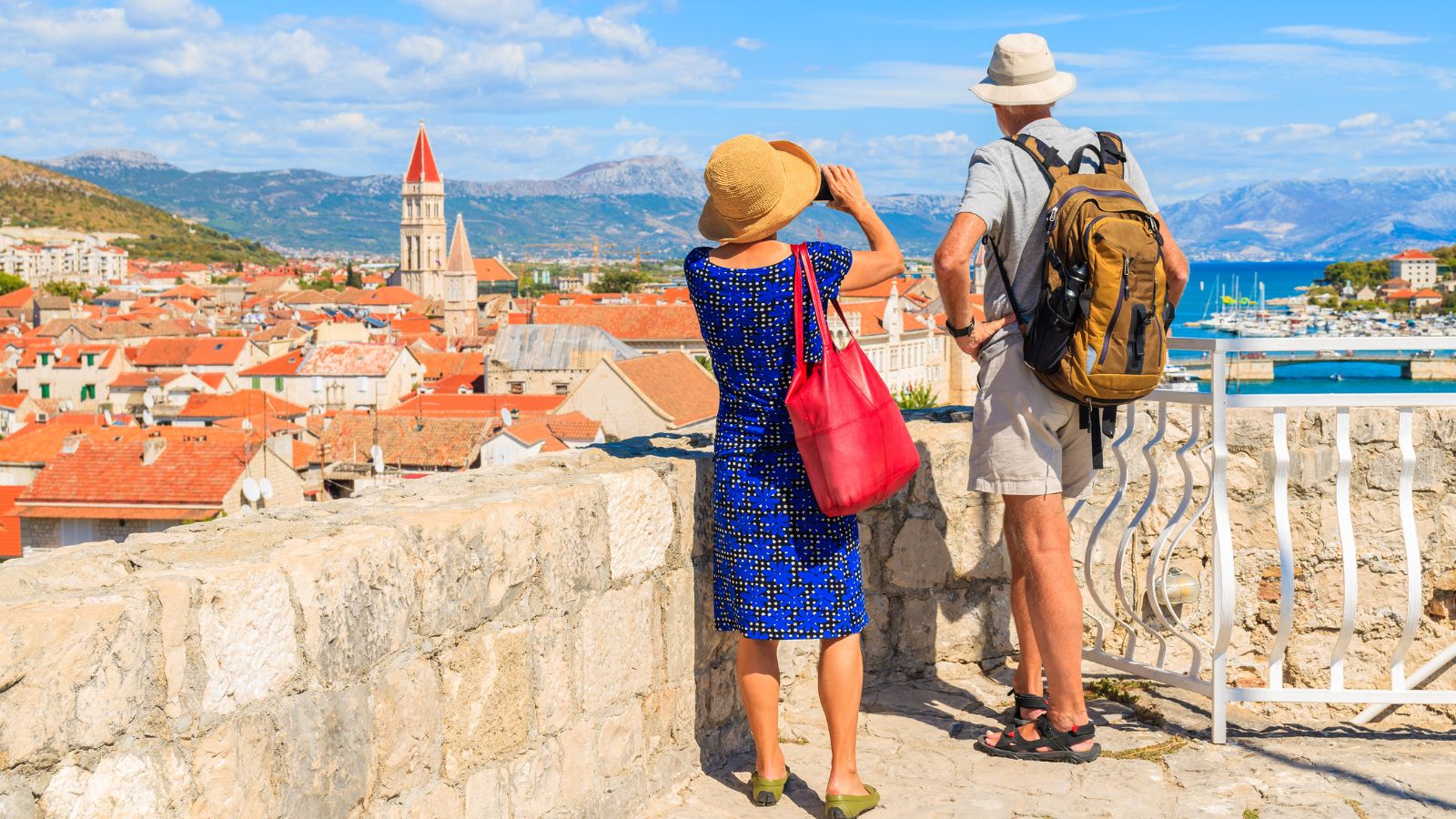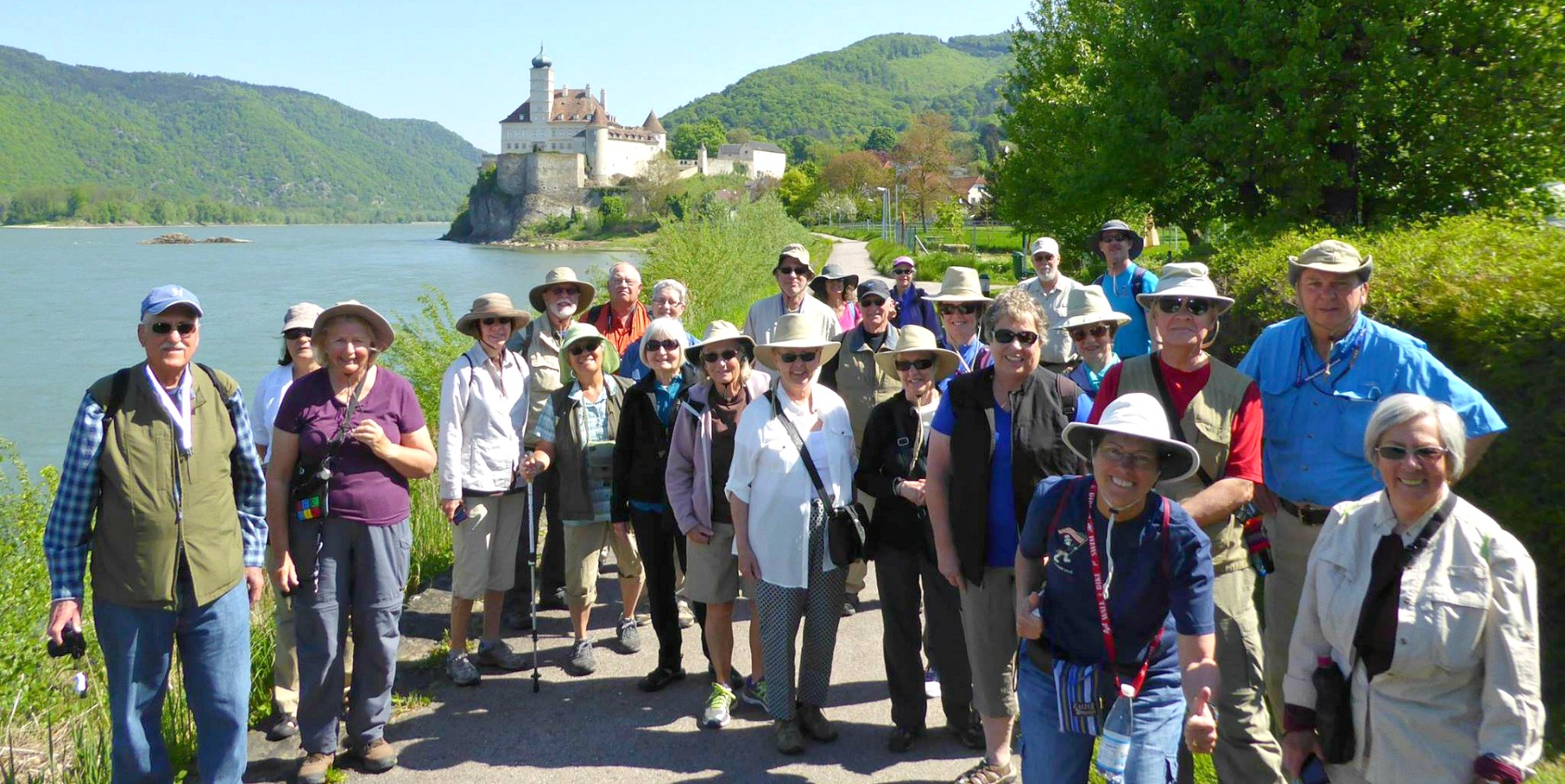Senior travel companies are experiencing a surge in popularity as the global population ages and the desire for fulfilling travel experiences remains strong. This burgeoning sector caters to a diverse clientele with specific needs and preferences, offering a range of services designed to ensure safe, comfortable, and enriching journeys. From meticulously planned escorted tours to adventurous expeditions and relaxing all-inclusive resorts, the options are as varied as the individuals seeking them.
This guide delves into the intricacies of the senior travel industry, exploring the various types of companies, services offered, planning considerations, and future trends shaping this dynamic market.
Understanding the nuances of senior travel companies is crucial for both prospective travelers and industry professionals. This involves recognizing the diverse needs of older adults, appreciating the specialized services provided, and navigating the planning process effectively. Whether you’re a senior planning your next adventure or someone interested in the business side of this growing sector, this comprehensive overview will provide valuable insights and practical advice.
Reviews and Testimonials of Senior Travel Companies
Choosing a senior travel company requires careful consideration. Understanding the experiences of other seniors is crucial in making an informed decision. Reviews and testimonials offer valuable insights into the quality of service, trip organization, and overall satisfaction levels.
Positive Experiences from Senior Travelers
Senior travel companies often rely on the positive experiences of their clients to attract new customers. Here are some fictional testimonials highlighting aspects that frequently impress senior travelers:
“My wife and I recently completed a guided tour of Italy with Silver Linings Tours. The itinerary was perfectly paced, allowing us to fully appreciate the sights and sounds without feeling rushed. Our tour guide, Marco, was exceptional, always attentive to our needs and providing insightful commentary. The accommodations were comfortable and well-located, and the overall experience exceeded our expectations.”
Arthur and Evelyn Miller, Florida.
“I travelled solo with Golden Years Getaways to explore the Scottish Highlands. I felt completely safe and well-supported throughout the journey. The small group size allowed for a more personal experience, and I forged lasting friendships with my fellow travelers. The trip was expertly organized, and I would highly recommend this company to other solo senior travelers.”
Explore the different advantages of elderly travel tours that can change the way you view this issue.
Margaret Davies, England.
“Our cruise to Alaska with Ocean View Cruises was truly unforgettable. The ship was immaculate, the staff incredibly friendly and helpful, and the excursions were well-planned and exciting. We particularly appreciated the accessible facilities and the attention given to the specific needs of senior travelers.”
Robert and Susan Johnson, California.
Finding Reliable and Unbiased Reviews, Senior travel companies
Locating unbiased reviews requires a multi-pronged approach. Relying solely on a company’s website is insufficient; independent review sites provide a more balanced perspective. Checking multiple sources is key. Look at well-established travel review websites, such as TripAdvisor and Google Reviews, alongside specialized senior travel review platforms. Be aware that some platforms may have a higher concentration of positive reviews than others, potentially reflecting a bias.
Consider checking independent travel blogs and forums; these often contain detailed and nuanced reviews from experienced travelers.
Analyzing Reviews to Determine Company Strengths and Weaknesses
Effective review analysis involves looking beyond simple star ratings. Pay close attention to the narrative within the reviews. Identify recurring themes and patterns. Do multiple reviews mention exceptional customer service? Are there consistent complaints about specific aspects of the trip, such as transportation or accommodation?
Look for details about the company’s responsiveness to issues or complaints. A company that actively addresses negative feedback demonstrates a commitment to customer satisfaction. Focus on the specifics. Instead of vague statements like “the trip was great,” look for concrete details. Did the tour guide possess extensive knowledge?
Were the meals delicious and varied? Were the accommodations comfortable and well-maintained? The more detailed the review, the more valuable it is in your decision-making process. Comparing reviews across multiple platforms allows you to gain a more comprehensive understanding of the company’s strengths and weaknesses.
Marketing and Advertising Strategies for Senior Travel Companies

Senior travel companies face a unique marketing challenge: reaching a discerning and often tech-savvy demographic with specific needs and preferences. Successful strategies go beyond simple advertising and focus on building trust, understanding specific motivations, and utilizing a multi-channel approach. Effective marketing is crucial for attracting this lucrative market segment and ensuring the continued success of senior travel businesses.
Marketing Channels Utilized by Senior Travel Companies
Senior travel companies employ a diverse range of marketing channels to effectively reach their target audience. These channels are strategically selected to leverage the preferences and media consumption habits of older adults. While some channels are traditional, others embrace the digital landscape to connect with a tech-savvy segment of the senior population.
- Print Media: Publications such as AARP The Magazine, travel magazines targeting mature audiences, and local newspapers remain important channels. Print ads often feature large, clear fonts, high-quality images showcasing accessible travel experiences, and compelling testimonials from satisfied senior travelers.
- Online Advertising: Targeted online advertising on websites frequented by seniors, such as those focused on retirement planning or health and wellness, is crucial. These ads often utilize compelling visuals and emphasize the value proposition of the travel package. Search engine marketing (SEM) and carefully placed banner ads are also effective.
- Social Media: While not always the primary channel, platforms like Facebook and Instagram, when used strategically, can effectively reach senior travelers. Content focuses on visually appealing travel destinations, sharing user-generated content, and running contests to encourage engagement. Platforms like YouTube are also leveraged for showcasing travel videos and testimonials.
- Direct Mail Marketing: Personalized brochures and catalogs mailed directly to potential customers remain a relevant tactic, particularly for reaching seniors who may not be as comfortable with online booking. These materials often feature high-quality photography and detailed information about specific trips.
- Partnerships and Affiliations: Collaborations with retirement communities, senior centers, and organizations catering to older adults provide access to a highly targeted audience. These partnerships often involve presentations, workshops, and exclusive offers.
Examples of Effective Marketing Campaigns Targeting Senior Travelers
Successful campaigns often center around themes of safety, comfort, and value, reflecting the priorities of senior travelers.
- “Relax and Rejuvenate” Campaign: This campaign might feature imagery of serene spa treatments, comfortable accommodations, and stress-free travel experiences, appealing to seniors seeking relaxation and wellness. The messaging emphasizes ease and convenience throughout the journey.
- “Adventure Awaits” Campaign: This campaign might highlight active travel options, showcasing senior travelers engaging in activities like hiking, biking, or cultural tours. It emphasizes the accessibility of these activities and the benefits of staying active in retirement.
- “Discover Your Heritage” Campaign: This campaign could focus on culturally rich destinations and historical sites, appealing to seniors interested in learning and exploring their heritage. The campaign would showcase opportunities for learning and cultural immersion.
Building Trust and Credibility with Senior Travelers
Trust is paramount when marketing to senior travelers. This demographic is often more cautious and discerning, requiring a higher level of transparency and reassurance.
- Transparency and Clear Communication: Providing clear, concise information about pricing, itineraries, and inclusions is crucial. Avoiding jargon and using plain language helps build confidence.
- Testimonials and Reviews: Showcasing positive reviews and testimonials from previous senior travelers builds social proof and demonstrates the quality of the travel experience. Featuring diverse testimonials increases relatability.
- Safety and Security Emphasis: Highlighting safety measures, such as 24/7 support, travel insurance options, and accessible transportation, addresses a key concern for many senior travelers. This demonstrates a commitment to their well-being.
- Strong Brand Reputation: A well-established reputation for reliability and customer service is invaluable. Positive word-of-mouth referrals from satisfied clients are extremely effective.
Future Trends in Senior Travel
The senior travel market is experiencing a dynamic shift, driven by evolving demographics, technological advancements, and a growing awareness of sustainability. This evolution presents both challenges and opportunities for travel companies catering to this demographic. Understanding these emerging trends is crucial for remaining competitive and meeting the changing needs and desires of older travelers.The next five years will see a significant reshaping of the senior travel landscape, characterized by increased personalization, a focus on wellness and experiences, and a strong emphasis on responsible tourism.
Sustainable Tourism’s Growing Influence
The increasing awareness of environmental concerns is significantly impacting senior travel choices. More mature travelers are actively seeking eco-friendly accommodations, transportation options, and tour operators committed to minimizing their carbon footprint. This trend is pushing senior travel companies to incorporate sustainable practices into their offerings, such as partnering with eco-lodges, promoting local businesses, and offsetting carbon emissions from flights.
For example, several companies now offer carbon-neutral tours, highlighting their commitment to responsible travel. This shift necessitates a review of supply chains, transportation methods, and overall operational practices to align with sustainable tourism principles.
Adventure Travel for the Active Senior
The traditional image of senior travel as solely relaxation-focused is rapidly changing. A growing number of active seniors are seeking adventure travel experiences, including hiking, cycling, and even more extreme activities like kayaking or wildlife safaris, adapted to their physical capabilities. This necessitates the development of specialized itineraries and services, including options for varying levels of physical exertion and accessibility accommodations.
Companies are responding by offering curated adventure tours with manageable activity levels, incorporating rest days, and providing experienced guides familiar with the needs of older travelers. For example, specialized tours focusing on gentler hikes with stunning views are gaining popularity, catering to the desire for adventure without excessive physical strain.
Technological Advancements Enhancing Senior Travel
Technology plays a crucial role in shaping the future of senior travel. The rise of user-friendly travel apps, personalized itinerary planning tools, and virtual reality experiences is making travel planning and execution more accessible and convenient for older adults. Companies are investing in intuitive digital platforms to simplify booking processes, provide real-time support, and offer personalized recommendations. Furthermore, the use of wearable technology for health monitoring and safety features is becoming increasingly important, providing peace of mind for both travelers and their families.
For example, apps offering real-time translation services and GPS tracking are gaining traction, addressing specific needs of senior travelers.
Predicted Growth and Changes: A Visual Representation
Imagine a graph charting the growth of the senior travel market over the next five years. The line shows a steady upward trajectory, steeper in the latter half of the period, reflecting the growing senior population and their increased disposable income. Different segments of the graph represent the various trends: the segment for sustainable travel shows exponential growth, overtaking traditional package tours.
The adventure travel segment displays a significant increase, though smaller than sustainable tourism. Finally, a separate line representing technological integration shows a parallel and consistent rise, demonstrating the increasing integration of technology into all aspects of the senior travel experience. This visual representation illustrates a market driven by sustainability, adventure, and technological innovation, significantly changing the landscape of senior travel services.
The senior travel industry is a vibrant and evolving sector, constantly adapting to meet the changing needs and desires of an aging population. As technology advances and travel preferences shift, senior travel companies are embracing innovation to offer more inclusive, accessible, and enriching experiences. By understanding the key aspects of this industry – from the various types of companies and services available to safety considerations and future trends – both travelers and industry stakeholders can navigate this landscape effectively and ensure that the golden years are filled with memorable adventures.
The focus remains on providing peace of mind, personalized service, and unforgettable journeys for every senior traveler.



